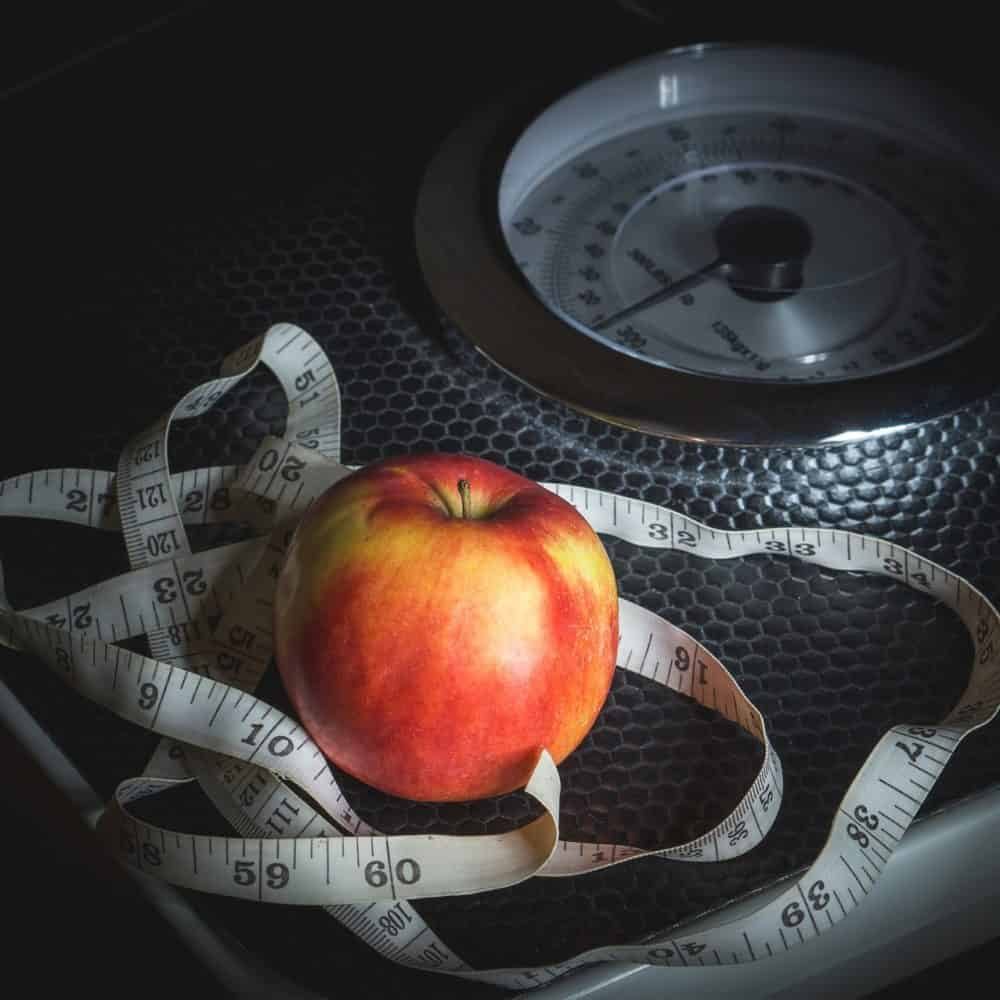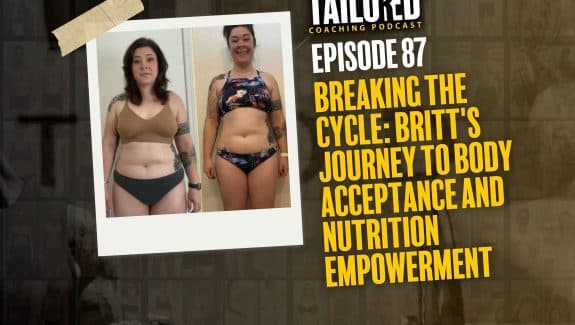If you’ve been reading my work for a while, you’ll have realized by now that dieting is not linear nor is it very similar from person to person.
Oh, and the answer to 90% of questions asked about nutrition is “It depends” (I used to HATE when my teachers told me that).
One part of things not being the same with nutrition prescriptions is adjustments. The way you adjust things for a client, when you adjust things for a client, and how aggressively you change things for a client.
Sometimes the most subtle tweak will drastically change their results and other times it takes a pretty aggressive or large tweak to get the needle moving again. Sometimes you have to change their macronutrient or calorie intake and other times, it’s a completely non-related shift that needs to be made.
Because remember what plays a role in fat loss, muscle gain, and improving performance:
Environmental stress, mood and general happiness, having fun and/or relaxation time, nutrition quantity and nutrition quality, training, cardio, sleep, hormonal balance….
The list could probably keep going on, too. But the point is that there is a lot going on and we cannot rely on one single form of adjusting in order to elicit a response (aka results).
Which is unfortunately what a lot of crappy coaches out there do, they simply cut calories over and over again until the client gets to the result – leaving them with nowhere positive to go, if they plan to maintain that result.
When they could have adjusted so many other factors, without pulling calories out, and gave the client the exact same result – which would have allowed the client to more easily maintain the result long-term.
This is what my coaching practice is built around.
Individuality.
Because that’s the key to sustainable results.
From the training program to the nutrition prescription to the way I coach them through it all – making individual adjustments along the way to not only guarantee a result, but to also educate them along the way AND make that result have longevity.
Which is why today I want to talk about a specific part of this individuality, the part about adjusting protocols.
We’re going to go over 4 Unique Diet Hacks That Break Plateaus.
1 – Resistant Starches
As I assume you already know, most carbohydrates are starches. Starches are long chains of glucose that are found in grains, potatoes and various foods.
But to make things a bit simpler for you… It’s white and brown carbs, you know – things like potatoes, yams, rice, bread, oatmeal, quinoa, etc…
But not all of these starches get digested when we eat them. Sometimes a small part of it passes through the digestive tract unchanged.
In other words, it is resistant to digestion.
This type of starch is called resistant starch, which functions kind of like soluble fiber, and there has been a lot of human studies to show that this resistant starch is super beneficial for our health.
This includes improved insulin sensitivity, lower blood sugar levels, reduced appetite and various benefits for digestion.
“Ahhhh now I’m getting where this is going, those all help fat loss!” ?
Yep! Exactly. Sometimes there’s more to fat loss than just calories in vs. calories out. We need to consider gut health, how our body is actually handling the foods we put inside it, and, believe it or not, our general health. Yeah that’s important too!
This is probably why resistant starch has become such a popular topic lately. In the last year I’d say, hundreds of people have started to experiment and implement it into their diets and most of them have seen major improvements.
So how can this be an adjustment tool to enhance fat loss, muscle gain, or performance based results?
Well you can add these into your diet without changing your calories, at all. But it will also help you digest and absorb all the other calories you’re taking in, because you’re optimizing your gut health with this new resistant starch being present in the diet.
Add to that, many people have some gut related issue yet are completely unaware.
And they do not call the gut “The Second Brain” for nothing… It’s pretty damn important! And it can play a major role in the results you see physically, because it affects everything from our nervous system to our hormones to our immunity.
“Ok ok ok… I get it Cody, but how do I find these resistant starches?!”
There are 4 types of resistant starches that you can find:
- Type 1:Is found in grains, seeds and legumes and resists digestion because it is bound within the fibrous cell walls.
- Type 2:Is found in some starchy foods, including raw potatoes and green (unripe) bananas.
- Type 3:Is formed when certain starchy foods, including potatoes and rice, are cooked and then cooled. The cooling turns some of the digestible starches into resistant starches via a process called retrogradation.
- Type 4:Is man-made and formed via a chemical process.
Before moving onto the next unique dietary trick, I want to discuss number 3 real quick because I have found it to be the most profound type, which causes the biggest change/improvement for individuals.
It’s pretty weird to consider… Cook your food, let it cool and then eat it.
Well some scientist took this even further in their labs, by cooking and then cooling and then cooking it again. In fact after they tested that, they did the entire process again.
See what they found was that the more they repeated this process, the better the resistant starch became and the bigger the benefit the individual experienced.
Now, we don’t expect you to cook and cool your potato 18 times so that you can be the most resistant starch eater out there.
But if you do experience gut issues or have the time to do so, I’d consider trying out the cooking and cooling process 1-2 times for your meal prep next time.
2 – 1 ½ Extra Hours Of Sleep, Per Night
You might be thinking, “Damn… That’s pretty specific, man.”
Why yes, yes it is very specific. And results are worth it, right? Thought so.
No but seriously, there’s a reason it’s so specific. The reason is because of the study that was performed on a group of individuals.
Scientists took a large group of individuals with bad sleeping habits, split them into two separate groups, and monitored their sleep, body comp, diets, and environments.
Group 1 didn’t change a thing, they kept their poor sleeping habits and just got monitored.
Group 2 was encouraged to sleep an extra 1½ hours per night, which ended up averaging out to be 52-90 minutes extra per night. They were also monitored for all the same things.
The findings?
Group 2 lost weight, improved their diets, ate less sugar and processed carbs, and completely improved their diets – without ANY instructions to do so, they just naturally did this.
So what did they discover and learn from this study? Simple. Being sleep deprived is one of the leading causes of sugar cravings, poor dietary control, and stress related eating.
Something that we may have already suspected, but now we know for sure.
Which is why every single one of my clients has to fill out an assessment form at the end of every week, where we rank all their biofeedback – cravings and sleep being on there.
It’s a way to become aware and learn what is off. And whatever is off, can be the exact thing that needs to be adjusted in order to see better results.
I can’t tell you how many clients I’ve pushed to sleep better, holding them accountable of making it actually happen, and seen better results because of it.
3 – Increasing Food Quality, Instead Of Decreasing Food Quantity
I’ve seen this a lot too, but I actually just helped a client break through a fat loss plateau he was facing with this exact adjustment.
This client had been hitting his macros damn near spot on every single day, to the point that there was really no issues or faults being made in the quantity or consumption department.
So in most cases, people would recommend to drop calories by reducing carbs or fats… But my philosophy with nutrition is that we should be losing fat on as many calories as possible, because hormonally that is going to be the smartest route to take. So I didn’t want to pull his calories, yet.
Instead, I took a look a bit deeper into his daily diet and what his exact meals were looking like.
I noticed a few things:
- There was some snack food carbs in his diet, which in 90% cases is totally fine. If you hit your macros – you’ll lose weight.
- He could have been getting a bit more omega-3 fats and healthy saturated fats in his diet.
- I wasn’t satisfied with the amount of colors I saw in his diet, especially dark greens.
So after looking and noticing these things, I reached out to him with specific details on how we could optimize things just a bit. Here’s what we did:
- Added in more dark green vegetables.
- Added some more colors, that being a serving of fruit and some colorful veggies like mushrooms, bell peppers, etc…
- Replaced a small portion of the snack-like carbs with foods like thick veggies, rice, sweet potatoes, etc…
- Focused on rotating cooking oils and fats a bit, that way we could implement some grass fed butter and coconut oil into the mix.
- Took 2-3g of combined EPA/DHA from fish oil.
Doing all this did not change his training, his calories, or his macronutrient ratios. All’s this did was diversify where his macros were coming from, specifically by adding in more whole food based things – aka MORE nutrients within his calories.
We didn’t completely remove snacks or eliminate the principle of macro flexibility; we just prioritized things differently for 80% of his meals.
What was the result…?
He dropped 2+lbs that week, breaking his plateau that we were stuck on. The next week, more weight started falling off. We successfully broke the plateau and continued on his path to more fat loss.
Now some people may argue, “That’s probably just glycogen being depleted and lowered in the body, so he lost water weight.”
And the reason I will disagree and say that that statement is completely wrong, is because the amount of carbs changed over from snack-like foods to veggies was so little and insignificant that it couldn’t have retained that much water before the switch. Add to that, he’s adding more bulk in foods via fibrous veggies and that can create a jump on the scale as well – which means they would’ve evened out.
So what actually happened?
His digestion probably improved, his gut health improved, his body’s ability to absorb the other calories/nutrients he was taking in probably improved, his mood and sleep probably improved, and his overall bodily/hormonal functions just improved.
HEALTH. That’s it. Simple.
I truly believe, from years of experience with clients, that you will be able to lose body fat on MORE calories if you purposely fill the majority of your calories with high nutrient dense foods.
So a simple dietary trick to help you lose more fat is to prioritize your food quality WHILE still tracking your macros. 80-90% of your diet should be whole foods and you should be striving for those foods to be the most nutrient dense foods you can find.
4 – Eat More….
I would honestly say that 60-75% of the people who approach me for nutrition coaching are under eating when it comes to calorie consumption.
Now that may just be overall calories just being too low, or that they’re performing too hard too much for the amount of calories they’re consuming.
But either way, they’re under-recovery and a big part of that is eating too little.
I did a podcast with Travis Zipper, Hormonal Specialist, and this was a big topic we covered. Because like he told me, “We need to fuel the body and majority of people vastly underestimate the amount of calories they need in order to do so – which is why so many people are stuck and not seeing results.”
I also just updated my testimonials page with an awesome client success story from CrossFit athlete Sara Potter and one of the first things I told her on our consultation call, which she mentioned in her story, was that she just wasn’t eating enough.
We had to pause everything and bump her calories up, because her hormones were suffering and therefore – her physique AND performance were both suffering as well.
Now, she’s eating WAY more food, performing better than ever, completely removed her eating disorder, and actually improved her body composition in the process.
All from eating more calories – now there is a lot of coaching that goes into the process of that, but the point is that she was in a similar position as millions of Americans who are under eating on a regular basis and actually hurting their results more and more by the day.
So what exactly happens when you under eat, chronically?
Well… essentially, a cascade of hormonal down regulation happens.
Typically your recovery starts to suffer, so cortisol rises and that can cause sleep to be destroyed, which is a prime time for daily hormonal regeneration. As that happens, your thyroid will usually start to get damaged and that has a direct affect on literally every single hormone in your body – imagine your hormonal system as a spider web, once this one is damaged… they all are.
At this point metabolism starts to slow down more and more, testosterone and estrogen levels start to be negatively impacted, and your body does 3 things:
1.) Stops Recovering and Starts Stressing More
2.) Stops Burning Body Fat
3.) Stops Performing Optimally
This affects your mood, cravings, hunger, stress levels, sleep quality, recovery, and the list goes on. But at the end of the day, as you can probably tell by now, this is VERY important to consider and focus on.
There is a time and place for serious deficits, which I cover in my Nutritional Periodization article. But you cannot be in that deficit for weeks and weeks on end, let alone months like some individuals end up doing.
The key to long-term results is planning your caloric deficits throughout the year in a smart fashion, working in maintenance phases and refeed days/weeks sporadically to make sure that you’re hormonally staying in a good place.
Smaller deficit, patience, and smart adjustments along the way = RESULTS.

























































































































































































































































































































































































































































































